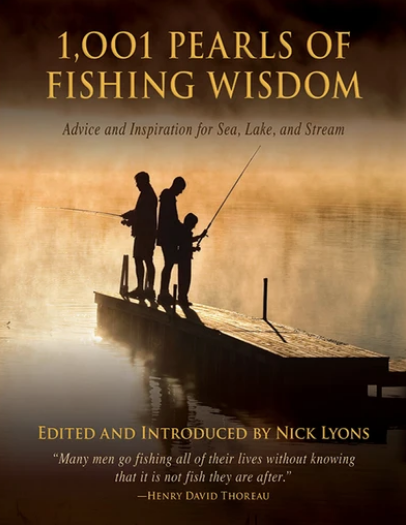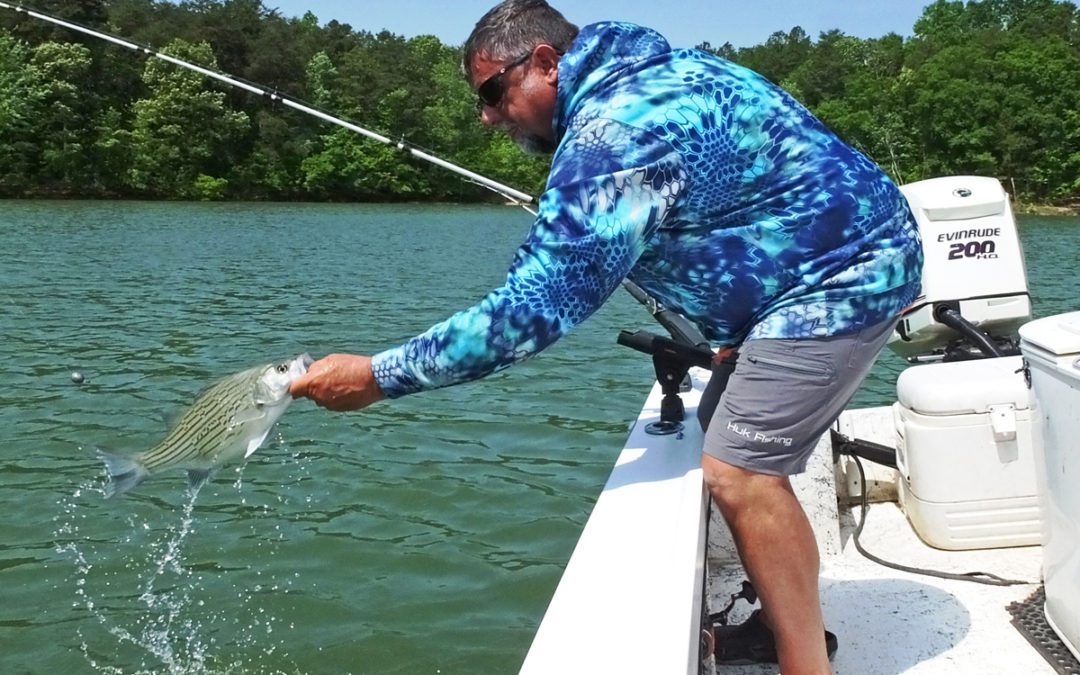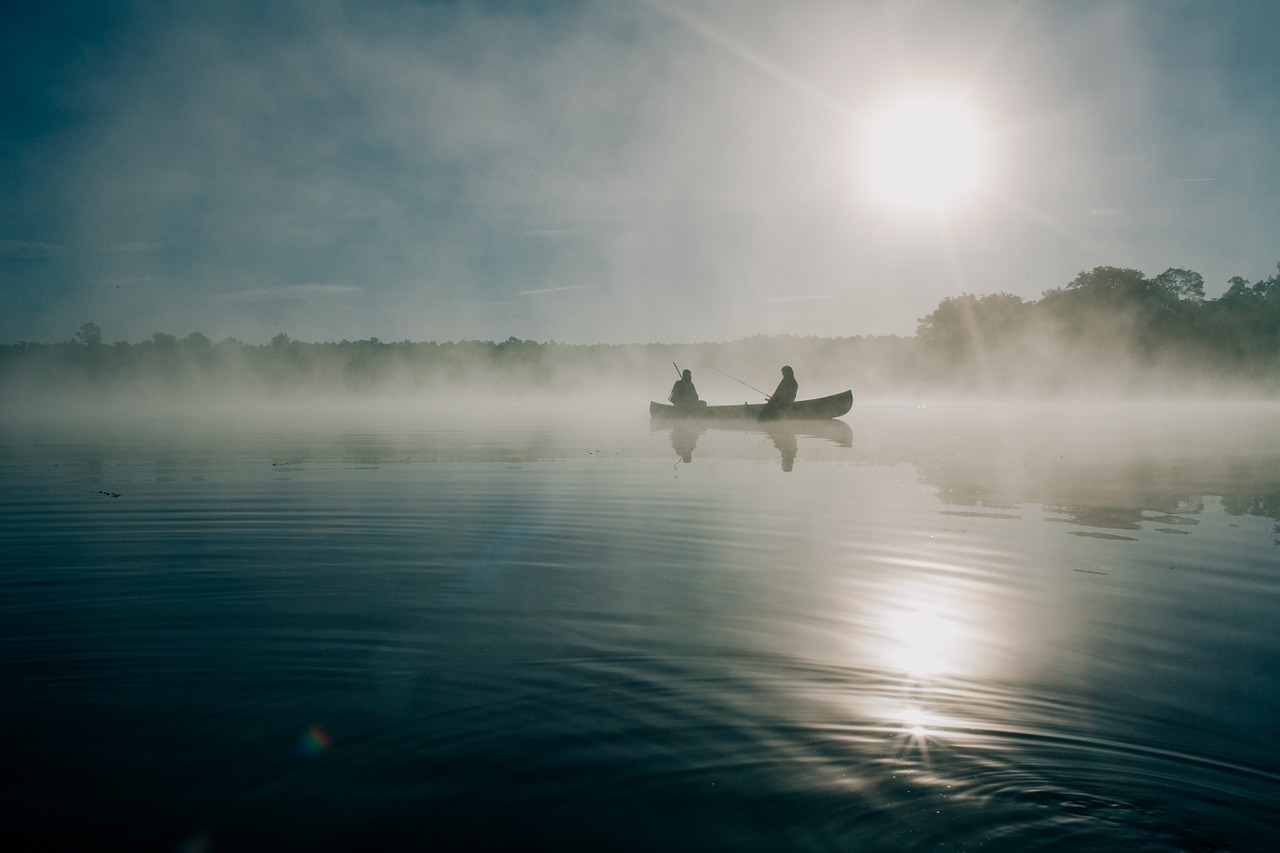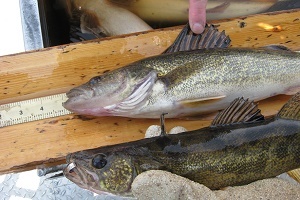Fishing with longtime striper and hybrid guide Chip Hamilton on South Carolina’s Lake Hartwell, we were primed to get our fishing strings stretched by these powerful fish.
Getting three outdoor writers on the same boat, and all in accord on the singular objective of the expedition, is a unique experience. But the pursuit of the equally distinctive hybrid bass makes for a unifying experience.
Such was the case when I joined writers Pat Robertson and Larry Chesney from South Carolina on an early morning hybrid striped bass adventure The objective? To simply catch several of these tenacious and often overlooked fish.
Fishing with longtime striper and hybrid guide Chip Hamilton on South Carolina’s Lake Hartwell, our group was primed to get our fishing strings stretched by these fish, long on power and endurance. And that’s precisely what occurred.
Hamilton said hybrids are hatchery raised and stocked in many large lakes across the country.
“Hybrids are an exciting species for fishermen who enjoy aggressive bites and drag peeling power while providing incredible table fare,” Hamilton said. “During the spring hybrids can be targeted specifically when on spawning runs like now, but during most of the year I’ll target them along with striped bass.”
As the name implies the hybrid is a hatchery-produced blend of the naturally occurring female striped bass and male white bass.

The difference between hybrids and stripers is readily apparent when compared. The hybrid on the left has obvious broken lines while the stiriper has unbroken lines.
While similar in appearance to striped bass, identification of hybrids is not difficult with a little practice. The body shape of hybrids is more compressed than the streamlined striper and while both have distinct lateral lines, hybrids are distinguished by having generally broken rather than solid horizontal stripes typical of stripers. White bass differ from both by having only faint lateral lines. Hybrid striped bass are stocked in many parts of the country and have done exceptionally well in many large reservoirs and lakes. They thrive in open water lakes more so than in shallow weedy environments because of their pelagic nature.
The size of hybrid striped bass varies by region but in some waters they can reach double-digit size with regularity. The world record caught from Greers Ferry Lake, Arkansas in 1997 pulled the scales to 27 pounds 5 ounces.
Hamilton said the average size is generally more in the three-to-five-pound class.
“We’ll catch a lot of fish much larger than that, but a five-pound hybrid is a line stripping machine on moderate tackle,” Hamilton said. “I think for their size they pull harder than a striper pound-for-pound and that’s saying a lot because stripers are very powerful fish.”
Another enduring trait of hybrids is they’re schooling fish and usually travel in big numbers, thus creating the potential for extremely fast fish-catching action. They are taken on a variety of artificial lures including topwaters, jigs, spoons and crankbaits as well as live bait offerings. For live bait fishermen it’s important to recognize hybrids are suckers for the same forage species they’re currently munching on in their home waters. Blueback herring and shad are two common forage favorites.
Hamilton added that the size of the fish coupled with the firm, flaky texture of the meat makes it a prime candidate for multiple cooking methods.
Hamilton’s Hybrid Striped Bass Recipe
“Not only do I have an obsession for catching hybrids, I have a passion for eating them,” he said. “Because the fish are usually large enough to produce hefty fillets, hybrids have an ideal texture for grilling, broiling or baking.”
Hamilton said his favorite recipe is simple and can be used when grilling or baking in the oven.
“I take thick fillets and coat completely with olive oil,” he said. “Then I coat all sides of each fillet with garlic salt and a seasoning salt. My favorite is Goya Adobo.”
Next, he thoroughly covers the fillets in finely grated parmesan cheese and cooks until done.
“On the grill I lay the fish on foil with the edges cupped to keep the juices from draining and I cook at about 400 degrees for 15-20 minutes,” he said. “For the oven I use a glass baking dish and cook at 375 degrees for 20 minutes, then serve over a bed of rice.”
Hamilton said using the grill produces a hint of smoke flavor, but the oven-cooked fish creates “brine gravy” that collects in the bottom. That he pours over the rice.
Contact your state fishery department for information on lakes where hybrid striped bass are found. If you haven’t enjoyed the spectacular species, you’re in for a pleasant surprise.
 For everyone, from those who enjoy fishing as an occasional pastime to those who revel in the philosophies of one’s relationship with the water, rod, and reel, this book of quotable fishermen is the ultimate repository of fishing wisdom. From proverbs to professional tips to general words of insight, this collection of quotes is the go-to guide for anyone who loves some aspect of the wonderful world of fishing. Chapters includes: Some Hints About Why We Fish, Techniques and Strategies, When and Where We Fish, Big Fish, The Lighter Side and many others! Shop Now
For everyone, from those who enjoy fishing as an occasional pastime to those who revel in the philosophies of one’s relationship with the water, rod, and reel, this book of quotable fishermen is the ultimate repository of fishing wisdom. From proverbs to professional tips to general words of insight, this collection of quotes is the go-to guide for anyone who loves some aspect of the wonderful world of fishing. Chapters includes: Some Hints About Why We Fish, Techniques and Strategies, When and Where We Fish, Big Fish, The Lighter Side and many others! Shop Now




